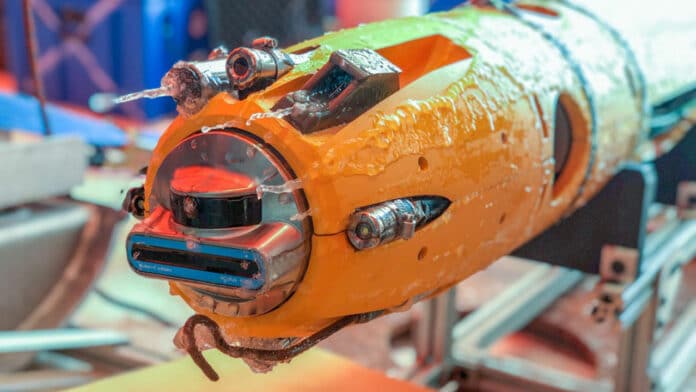A Cornell University-led research based on a first-of-its-kind exploration by an underwater robot has revealed that crevasses, more than mere cracks in the ice, play an important role in circulating seawater beneath Antarctic ice shelves, potentially influencing their stability.
The researchers used Icefin, a remotely operated underwater robot, to explore and measure a crevasse in the base of the Ross Ice Shelf. The robot produced the first 3D measurements of ocean conditions near where it meets the coastline, a critical juncture known as the grounding zone.
The robotic survey revealed a new circulation pattern – a jet funneling water sideways through the crevasse – along with rising and sinking currents and diverse ice formations shaped by changing flows and temperatures.
These details will enhance the simulation of melting and freezing rates of ice shelves at grounding zones, where few direct observations exist, and of their potential contribution to global sea-level rise.
“Crevasses move water along the coastline of an ice shelf to an extent previously unknown, and in a way, models did not predict,” said Peter Washam, a polar oceanographer and research scientist at Cornell University. “The ocean takes advantage of these features, and you can ventilate the ice shelf cavity through them.”
The Icefin vehicle is a slender robot – roughly 12 feet long and less than 10 inches around. In late 2019, the scientists deployed the robot into a tether down a 1,900-foot borehole drilled with hot water near the junction of Antarctica’s biggest ice shelf and the Kamb Ice Stream. These grounding zones are crucial for controlling the ice sheets’ balance and the places where changing ocean conditions can have the most impact.
On the team’s last dive, a senior research engineer, Matthew Meister, drove Icefin into one of five crevasses found near the borehole. Equipped with thrusters, cameras, sonar, and sensors for measuring water temperature, pressure, and salinity, the vehicle climbed nearly 150 feet up one slope and descended the other.
The survey revealed changing ice patterns as the crevasse narrowed, with scalloped indentations giving way to vertical runnels, then green-tinted marine ice and stalactites. Water movement around the horizontal jet was driven by melting at the crevasse base and salt rejection from freezing near the top, resulting in uneven melting and freezing on the two sides. The lower downstream wall experienced more melting.
“Each feature reveals a different type of circulation or relationship of the ocean temperature to freezing,” Washam said in the press release. “Seeing so many different features within a crevasse, so many changes in the circulation, was surprising.”
According to researchers, the findings highlight crevasses’ potential to transport changing ocean conditions – warmer or colder – through an ice shelf’s most vulnerable region.
